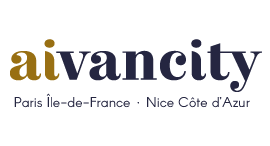A historic step forward for the audiovisual industry
In May 2025, DeepMind (a subsidiary of Google) presented Veo 3, an innovative AI-based video generation model. Able to produce short sequences in 4K with integrated sound (voice, sound effects, music), Veo 3 marks a technological breakthrough in the audiovisual field1. In just a few weeks, traffic on specialized platforms jumped by +162%, demonstrating the creative community’s immediate and massive interest in this new capability.2. This breakthrough represents the end of the era of AI-generated silent videos, and paves the way for more immersive and accessible audiovisual creation.
Multimodal technology: text, image, video and sound
Veo 3 is based on a hybrid broadcast-transformer architecture, optimized to maintain visual consistency over long sequences. One of the model’s major assets is its multimodal capability: it accepts text prompts, as well as still images or video clips as input, enabling it to reproduce a specific style or mood. Veo 3 also integrates camera controls (zoom, pan, drone), as well as advanced physics simulation – light, shadows, fluids and textures – ensuring realistic, professional rendering.3.
Concrete, committed uses
Veo 3 applications can be found in several sectors:
- Cinema & advertising: ultra-realistic 4K VFX generation, at up to 99% lower cost than traditional methods, enables directors and advertisers to create prototypes and teasers at lower cost4.
- Video games: Veo 3 facilitates the production of immersive cinematics for trailers or intros, limiting production costs and accelerating time-to-market.
- Social networks: creators can now produce short videos with narrative sound, increasing engagement by +30%, attesting to the added audiovisual value on platforms like Instagram or TikTok5.
- Education & e-learning: Veo 3 enables the creation of multimodal educational content (voice-over animations, animated scientific demonstrations), making learning more visual and aural, and therefore more effective.
- E-commerce & branding: companies can quickly generate animated product clips with narration, improving conversion through more immersive communication.
Technical limits and ethical challenges
Despite its advances, Veo 3 has certain limitations:
- Limited video duration (approx. 8 seconds at 720p) in the basic package. Longer 4K versions are under development, but remain reserved for Gemini Ultra subscribers or via Vertex AI API.6.
- Audio synthesis still imperfect, particularly in terms of natural intonation, lip-synchronization and complex emotions, often requiring post-production retouching.7.
- Risk of deepfake: the ease of generating realistic visuals raises ethical questions. Google offers an invisible SynthID watermark and moderation tools, but possible abuses require legal and technical vigilance.8.
- High cost and limited accessibility: the Gemini Ultra subscription at $249/month limits access to studios and large companies, leaving independent creators waiting for more affordable versions.
Tomorrow’s skills for designers
With the arrival of Veo 3, video professions are changing:
- Prompt creative design: compose a clear, visual written brief to guide the AI towards the desired creation.
- Video and audio post-production: adjust generated sequences (editing, color correction, lip-synchronization) for professional rendering.
- Technical understanding: understand AI mechanisms (pipeline, format management, watermarking) to better integrate the tool into the workflow.
- Ethics and regulation: master the legal principles of image rights, personal protection and responsible use of audiovisual creation.
These hybrid skills, halfway between art, digital technology and ethics, are essential if Veo 3 is to be fully exploited.
Veo 3: towards hybrid and collaborative professions
By 2030, audiovisual creation will rely on hybrid teams with a wide range of skills:
- The augmented director, who steers the vision and ensures narrative coherence.
- The prompt engineer, trained in the language of AI to guide multimodal creation.
- The IA sound designer, responsible for sound quality and lip-synchronization.
- Thecontent ethicist, ensuring responsible use of images and data.
- An AI technician, responsible for model integration, deployment and maintenance.
This organization will foster a creative synergy that is faster, more collaborative – and above all, more human.
Ethics & responsibility: a differentiating advantage
More than a technical issue, ethics is becoming a vector of trust:
- Content traceability: the SynthID watermark identifies the origin of generated videos.
- Transparency and control: control of prompts and the AI pipeline guarantee controlled, compliant narration.
- Combating misinformation: by combining watermarking, moderation and contextual verification, technology can limit deepfakes.
- Inclusive creation: Veo 3 democratizes access to professional quality, promoting diversity of voices and styles in audiovisual production.
These measures place Veo 3 and its creators in a responsible position, looking to the future of content.
People still in the driver’s seat
Veo 3 does not mark the end of the director’s or designer’s profession: on the contrary, it enhances it. By automating technical tasks, AI offers a gain in time, creativity and precision.
For this transformation to be virtuous, several conditions must be met:
- A clear, ethical framework, with watermarking, traceability and up-to-date regulations.
- Improving the skills of those involved in audiovisual production.
- Ongoing dialogue between technicians, lawyers, artists and audiences.
In this way, AI becomes a partner, not a substitute – guaranteeing creativity that is enhanced, responsible and rooted in human intent.
References
1. Wikipedia. (2025). Veo (video text template).
https://fr.wikipedia.org/wiki/Veo_%28mod%C3%A8le_texte-vid%C3%A9o%29
2. Reuters. (2025). Veo 3 generates a +162% peak in traffic.
https://www.aibase.com/news/19041
3. DeepMind Blog. (2025). Veo 3: integrated audio and 4K rendering.
https://veo3.im/blog/deepmind-veo3
4. Veo3.io. (2025). Cinema & advertising use.
https://www.veo3.io/fr
5. Veo3.io. (2025). Cinema & advertising use.
https://www.veo3.io/fr
6. Tom’s Guide. (2025). Limited duration in standard version.
https://www.tomsguide.com/
7. Medium. (2025). Audio synthesis: progress and limits.
https://medium.com/
8. The Verge. (2025). SynthID & the fight against deepfakes
https://www.theverge.com/

